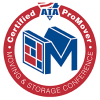Office Move Master Plan
Want to execute the perfect office move? Download the Office Relocation Master Plan.
How to Plan an Office Move With Help From All Points of Texas
Anyone who has ever planned an office move could tell you how exhilarating and overwhelming it may feel throughout the process. Most people don’t want to think about anything until after the move’s been completed and everyone’s working in the shiny, brand-new office. However, there are various components of the move that you must plan to ensure a smooth transition for everyone involved. As a full-service moving company, All Points of Texas specializes in home and office moves. Below, our commercial movers share invaluable advice about planning your next office move.
What You Should Do During the Planning Phase (6-12 Months)
Ideally, you should begin planning your office move at least 6-12 months in advance. This will give you ample time to organize every detail, including the following:
- Centralize All Moving Documents in One Convenient Place
During the planning phase, you’ll want to organize all information pertaining to the office move in one convenient place. This will allow you to create a timeline for your move with to-do lists and notes. Whether you prefer storing everything in a physical binder with printouts or as digital documents on Google Drive, the idea is to centralize everything so that nothing slips through the cracks. You’ll want to keep all moving company contracts, agreements, insurance records, receipts, and other essential documents together for easy access. It also helps to create one separate email address for all move-related inquiries and ongoing correspondences with employees, customers, or vendors.
- Establish a Moving Budget and Contact Commercial Movers
Once an office move has been decided, your company’s leaders will need to establish a moving budget and other guidelines. Will a company credit card be used to pay all moving-related expenses, or will human resources or department heads need to submit invoices? Who must approve vendor contracts? This will help you determine who needs to add purchases and vendor negotiations to their to-do lists.
Once you’ve figured out who is responsible for purchasing decisions, you’ll want to begin contacting commercial movers for a quote. You’ll need to provide the movers with your moving dates, employee headcounts, and other logistics. Be sure to compare and contrast moving rates, also figuring in a company’s credentials, resources, and reviews. You may need to do a bit of research when deciding which local or long-distance mover is best for your company’s relocation needs. Check out these helpful tips on How to Choose a Moving Company for additional info from our expert office movers.
- Announce Your Office Move to Employees as Early as Possible
Start getting your employees excited about the office move as early as possible. Announce it in your company’s next newsletter or town hall presentation. Discuss the office move comprehensively, answering questions and addressing concerns. The more detailed you can be about the move and to-do lists, the better. Your employees will all be on the same page and feel more motivated about completing their office move checklists before the big day. Key items to include in your announcement include:
- Moving times and dates
- New office address and directions
- Key features of the new location
- Reason for the relocation from your CEO
- What you expect from your employees right now
- What you expect from your employees during the move
- Hold Small Discussion Groups to Get Employee Feedback
Be transparent with your employees during the planning phase. Communicate essential information often, send out employee feedback surveys, and organize small discussion groups to get an idea of what your employees’ concerns are before moving day. Should the new office have a private or open floor plan? What type of workstations do your employees prefer? Are they satisfied with traditional office cubicles, or are they interested in modern standing desks? Will you be transferring all office equipment with you or ordering new equipment once you get there? Be sure to devise a new seating arrangement, considering which teams prefer to sit near each other for collaborative purposes. Identify any issues your employees may have with packing, organizing, or carrying heavy boxes.
- Evaluate What You Have & Don’t Have for Your Office Move
No matter the size of your office or employee headcount, you’ll need to decide what’s being taken to the new location and what’s being tossed. A detailed inventory list will help ensure nothing is left behind or unaccounted for during the big move. Be sure to check every nook and cranny, including the breakroom cabinets and supply closets. Consider your existing floor plan versus the new one. Are your new kitchen and breakroom twice the size of the current ones? You may need to order new items.
- Establish a Moving Day Strategy With Managers & Employees
Look to your company’s managers to oversee workflows during the moving process. Make sure any deadlines that fall within your moving timeframe are addressed. You may also consider forming a voluntary moving committee of employees who want to be involved in the office move. Some team members may want to help pack or unpack, organize the move, or decorate the new office. When it comes to moving, take help wherever you can get it!
What You Should Do During Packing & Prepping Phase (3-6 Months)
The next phase of the moving process is the packing and preparing phase, which may be anywhere from 3-6 months before your office move. Details you’ll need to consider at this time include:
- Determine the Moving Services & Number of Movers You Need
Once you’ve hired a moving company, don’t be afraid to ask for expert advice about what moving services you’ll likely need when relocating. Will you need professional packing services? Will you need a short-term storage solution before your moving day? How many commercial movers and moving trucks will you need? Are you interested in a cleanup crew or cleaning service to clean out your old office? Be sure to ask your moving company how flexible they are with moving times and dates. Is there a fee for coming early or staying late? Do they charge by the hour or per moving job? How are moving truck fees calculated? What happens if the movers get stuck in traffic? What moving services are included in your quote? Does your moving company supply or sell moving boxes and supplies? Have you considered renting bins or moving pods, or are you more comfortable with traditional cardboard moving boxes?
- Make Arrangements With Building Managers & Cleanup Crews
Be sure to identify any potential obstacles before the moving day. You’ll need to work out the best moving schedule with your building managers, so you can coordinate truck arrivals and departures at the best times without disrupting building traffic. Several companies in the same building often share building exits and entrances, and you don’t want to make any of your neighbors mad by blocking them. If you’re hiring a cleanup crew to address everything inside your old building or get everything ready for you at the new location, you’ll need to work out the details in your service contracts.
- Don’t Be Afraid to Downsize – Consider a Warehouse Sale
Many companies downsize when planning an office relocation. It makes sense if you’re planning to purchase new items for the new office. If you have a lot of old equipment sitting around like desks, chairs, or computers, consider hosting a warehouse liquidation sale to help recoup your new inventory costs. Be sure to inventory everything in your office, tagging items with stickers, so you know what’s being kept, what’s being tossed, and what’s potentially being sold.
- Keep Your Employees in the Loop With Info and Meetings
We cannot stress enough the importance of keeping your employees in the loop as much as possible. If you elected to have a moving committee, host regular meetings. As the moving day approaches, this group may need to meet more often to discuss packing and organizing the move. You also shouldn’t neglect to continue conversations with the rest of your employees. Post status updates in company newsletters or on social media. Provide information about the new office location, including amenities, directions, and places to eat in the neighborhood. Talk about new seating plans, parking passes, and security IDs your employees will need and when to expect these items. Announce all vital information and be prepared to answer questions. You want everyone to feel comfortable about the office move!
What You Should Do During the Moving Phase (0-3 Months)
You’ve now come to the final phase of the moving process. You will spend the last three months packing, labeling moving boxes, and tying up any loose ends before moving day, including:
- Discuss Packing and Labeling Your Moving Day Boxes
Depending on your headcount, assigning each department or team a color to label their boxes may be beneficial. Every employee likely has an employee number, which may also be used when labeling your moving boxes. Be sure to talk to your employees and ensure everyone knows what is expected of them during the move. Tap into your moving committee’s resources to identify any employees who wanted to help pack, unpack, or decorate the new office.
- Connect and Disconnect the Utilities at Both Locations
Designate someone who will be responsible for contacting the utility companies to disconnect services at your old building and connect services at your new location. These services may include electricity, water, Internet, and phone systems. You may also want to conduct a final walk-through at both locations about two weeks out to ensure everything is ready for the moving teams. Some companies like to plan an opening day celebration or party once the dust clears and items have been unpacked in the new location. However you choose to mark this momentous occasion is up to you and your staff. Check out All Points of Texas’ Office Relocation Master Plan to see when is the appropriate time to consider certain aspects of your next commercial move.
Ready for Your Next Adventure? Contact Our Moving Company!
Since 1964, All Points of Texas has been the preferred local and long-distance moving company of Texas home and business owners in Dallas, Fort Worth, Houston, San Antonio, Grand Prairie, and surrounding areas. Thanks to our affiliation with Atlas Van Lines, we have over 800 agents in 140 countries to assist with local, national, and international relocations of all sizes. Our moving company is also a member of the Southwest Movers Association, ensuring all moving services meet or exceed high industry standards. Contact us today to request a free custom quote from our expert residential and commercial movers!



